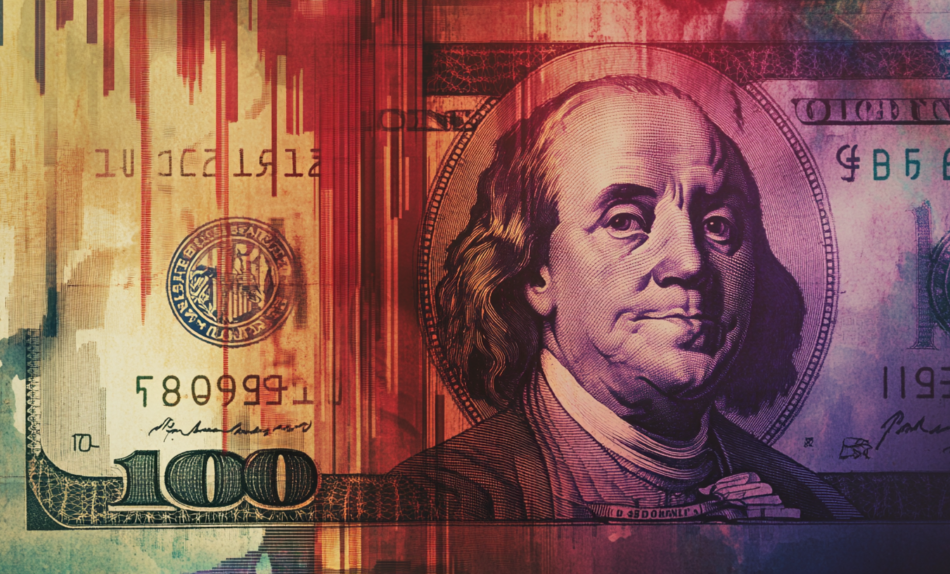If Trump And Republicans Sweep, Dollar May Climb 7% — But Harris Win Could Bring 5% Drop, Says JPMorgan
JPMorgan Chase & Co. analysts indicate that the fate of the U.S. dollar could swing dramatically depending on the outcome of the upcoming presidential elections.
A Donald Trump’s victory with Republicans gaining full control of Congress could drive the dollar up by as much as 7.3%, while a victory of Kamala Harris with a divided Congress might lead to a drop of over 5% in the dollar’s trade-weighted index (TWI), according to a report released last week.
The impact of a Trump victory on the dollar
If Donald Trump returns to the White House, JPMorgan predicts a series of aggressive trade policies that could propel the dollar.
In particular, Trump has already threatened to hike tariffs on Chinese imports to 60% and suggested the possibility of introducing a 10% tariff on all U.S. imports.
The return of Trump’s protectionist trade policies would likely lead to a tariff-heavy approach that, according to JPMorgan’s estimates, could bolster the dollar significantly.
“There is precedent for what the combination of fiscal stimulus and tariffs can do for FX; it is well known that the dollar benefited from both of these channels throughout 2018- 2019,” JPMorgan wrote.
In a “Republican sweep” scenario, the dollar is expected to rally significantly, with the trade-weighted dollar index—tracked by the Invesco DB USD Index Bullish Fund ETF UUP—projected to gain 7.3%. In this case, the greenback could see its strongest gains against the Swedish krona (SEK), rising by 10.8%, and the euro (EUR), with an anticipated increase of 8.4%.
Conversely, if Harris wins with a split Congress, JPMorgan expects the dollar to experience its steepest decline, with the trade-weighted dollar index potentially dropping by 5.4%. This outcome would likely lead to a weaker dollar as trade tensions ease and economic priorities shift.
The table below highlights JPMorgan’s projected currency movements over the next one to two quarters under various election outcomes, providing forex traders with insights into how the 2024 U.S. election could shape the dollar’s trajectory.
| Election Scenario | USD TWI Change | USD vs. CNY | USD vs. EUR | USD vs. CAD | USD vs. CAD | USD vs. AUD | USD vs. SEK |
|---|---|---|---|---|---|---|---|
| Republican Sweep | +7.3% | +4.4% | +8.4% | +4.7% | +6.1% | +7.9% | +10.8% |
| Trump w/ Split Congress | +3.3% | +3.0% | +4.3% | +3.3% | -5.4% | +4.6% | +5.0% |
| Harris w/ Split Congress | -5.4% | -2.7% | -3.9% | -4.0% | -4.0% | -2.9% | -5.6% |
| Democratic Sweep | -3.9% | -2.0% | -3.1% | -2.5% | -0.7% | -1.4% | -4.6% |
Why could Trump’s tariffs trigger a dollar rally?
Economists at JPMorgan, the world’s largest investment bank, estimate that the tariffs imposed during Trump’s first term raised inflation by about 0.3% and shaved 0.4% off GDP growth.
However, analysts at JPMorgan warn that a second Trump administration could cause even greater economic disruptions if tariffs are ramped up further.
“In the event of a Trump 2.0 administration, the impact from a tariff war 2.0 could be much higher,” the JPMorgan team stated.
They project that a 60% tariff on all Chinese imports would raise U.S. consumer prices by 1.1%, while a universal 10% tariff on all imports could push inflation up by as much as 1.5%.
In a worst-case scenario—where both a 60% tariff on Chinese goods and a 10% universal tariff are imposed—inflation could spike by 2.4%, putting significant pressure on American consumers and businesses.
This inflationary surge would likely force the Federal Reserve to shift back to a more hawkish stance, reversing any plans to ease monetary policy.
Higher interest rates would be necessary to counteract the inflationary impact of tariffs, which could create a stronger monetary policy divergence between the U.S. and other economies.
For the dollar, this scenario would represent a tailwind. Rising interest rates make U.S. assets, like Treasuries, more attractive to foreign investors due to their higher yields. This increased demand for U.S. assets, driven by yield differentials, would boost demand for dollars, strengthening the greenback further in the face of escalating trade tensions.
Read Next:
Market News and Data brought to you by Benzinga APIs
© 2024 Benzinga.com. Benzinga does not provide investment advice. All rights reserved.


Leave a Reply